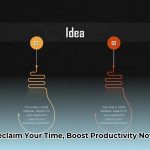Feeling overwhelmed juggling work and personal life? This guide provides actionable strategies to integrate your work and personal life, moving beyond the outdated concept of “balance.” Learn to create a fulfilling life where both your career and personal goals thrive in a mutually beneficial way. For more time management tips, check out this helpful resource on time management techniques.
Finding Your Flow: A Guide to Work-Life Integration Strategies
Let’s ditch the myth of perfect “work-life balance” and embrace work-life integration. It’s about skillfully blending your work and personal life to enhance overall well-being and achieve a sense of wholeness. This section explores how to understand your unique rhythm and implement small changes for a big impact, as well as key questions to ask yourself to build a life that works for you.
Understanding Your Unique Rhythm for Improved Well-being
What does a well-integrated life look like for you? There’s no universal blueprint. Your ideal blend depends on your values, ambitions, and lifestyle. Maybe it’s prioritizing family dinners, carving out time for creative pursuits like that pottery class you’ve always dreamed of, ensuring sufficient sleep, or dedicating time to volunteer work that aligns with your values.
Ask yourself these key questions: What truly energizes you? What activities leave you feeling drained? How do you define success, both professionally and personally? Answering these questions honestly is crucial for creating a fulfilling life. Focus on activities that bring you joy and create more space for them, while strategically minimizing those that deplete you.
Practical Steps: Small Changes, Big Impact on work-life balance
You don’t need a radical life overhaul to start integrating your work and life. Embrace gradual steps, cultivate positive habits, and observe the positive changes unfold. Think of it as building momentum, one small victory at a time.
- Set Clear Boundaries: Define the boundaries between work and personal time to prevent burnout and maintain a healthy separation. Examples include setting specific work hours, creating a dedicated workspace free from distractions, or silencing work notifications after hours. Consistency is key to reinforcing these boundaries.
- Prioritize Self-Care: Schedule activities that recharge you, such as exercise, reading, spending time in nature, practicing mindfulness, or pursuing hobbies. These appointments are non-negotiable and should be treated with the same importance as work commitments.
- Technology as Your Ally: Use technology to help you, not control you. Explore calendar apps, task managers, and productivity tools to stay organized without feeling constantly connected. Unsubscribe from unnecessary email lists and limit social media consumption.
- Build Your Support Network: Don’t try to do it all alone. Lean on friends, family, and colleagues for support. Asking for help is a sign of strength, not weakness. Consider joining a support group or seeking professional guidance from a therapist or coach.
- Regularly Review and Adjust: Work-life integration is an ongoing journey, not a destination. Regularly evaluate what’s working well and what needs adjusting. Don’t be afraid to experiment with different strategies and adapt your plan as your needs and priorities evolve.
- Delegate Effectively: At work and home, identify tasks that can be delegated to others. Freeing up your time allows you to focus on higher-priority activities and reduces your overall workload.
- Learn to Say No: Politely decline commitments that don’t align with your priorities or that will overextend you. Saying no protects your time and energy, allowing you to focus on what truly matters.
Your Workplace: A Partner in Integration for Harmonious Life
Your employer significantly influences your work-life integration efforts. A supportive work environment enhances productivity and fosters a sense of well-being. Ideally, your workplace should:
- Offer flexibility: Think flexible hours, remote work options, compressed workweeks, or job-sharing opportunities.
- Foster a culture of trust and autonomy: Feel trusted and supported by your employer to manage your work and time effectively.
- Invest in employee well-being programs: Access mental health resources, wellness initiatives, and employee assistance programs.
- Support family-friendly policies: Parental leave, childcare assistance, and flexible spending accounts demonstrate a commitment to balance.
- Promote open communication: Encourage open dialogue between employees and managers about work-life integration needs and challenges.
Long-Term Strategies for Lasting Harmony with work and life
Building lasting work-life integration is a marathon, not a sprint. It requires consistent effort, self-awareness, and a willingness to adapt. Here are some long-term strategies to consider:
- Design Your Ideal Life: Create a vision for your life, outlining your career aspirations, personal goals, and core values. Use this vision to guide your decisions and prioritize your time and energy.
- Nurture Your Relationships: Invest in relationships with family and friends. Make time for meaningful connections and activities that strengthen your bonds.
- Embrace Change: Life is constantly evolving. Your strategies for work-life integration will need to adapt to changing circumstances, priorities, and life stages.
- Cultivate Gratitude: Practice gratitude daily to appreciate the good things in your life and maintain a positive outlook.
- Seek Continuous Learning: Continuously seek opportunities for personal and professional growth to stay engaged and fulfilled.
Remember, work-life integration isn’t about achieving a perfect, unattainable ideal. It’s about creating a life that feels authentic, fulfilling, and aligned with your values. It’s a dynamic process of continuous improvement and self-discovery.
How to Create a Personalized Work-Life Integration Plan for stress reduction
Key Takeaways:
- Prioritize work-life integration, not balance, for a seamless blending of professional and personal life.
- Develop a personalized plan addressing your unique needs and preferences, reflecting your individual circumstances and aspirations.
- Implement flexible work arrangements, mindful tech use, and strong boundaries to protect your time and energy.
- Regularly review and adjust your plan to ensure it remains relevant and supportive as your life evolves.
- Ensure individual commitment and organizational support for optimal results, fostering a culture that values well-being and flexibility.
Understanding the Shift from Balance to Integration for a holistic mindset
Shift towards work-life integration and discover a harmonious rhythm in balancing professional and personal life. The goal is not to separate them completely but to find how they can coexist and benefit one another, creating a synergistic relationship where both aspects thrive.
This shift necessitates a personalized framework. Creating a personalized work-life integration plan involves understanding your unique needs and preferences, identifying your values, and aligning your actions with your goals.
Step-by-Step Guide to Your Personalized Plan for improved wellbeing
Let’s build your plan, step by step, for a better quality of life. This is an iterative process, so be patient with yourself and celebrate small victories along the way.
- Self-Assessment: Identify what truly matters to you, what drains your energy, and what brings you joy. Determine your top priorities in both work and personal life, and understand how they intersect.
- Time Audit: Track your time for a week to reveal time-wasters and true priorities. Analyze how you spend your time and identify areas where you can make adjustments.
- Goal Setting: Set SMART goals (Specific, Measurable, Achievable, Relevant, Time-bound) for both your professional and personal life and connect those goals. Ensure that your goals are aligned with your values and contribute to your overall well-being.
- Boundary Setting: Establish clear boundaries between work and personal time by setting specific work hours, communication channels, or a designated workspace. Communicate these boundaries to your colleagues, clients, and family members.
- Technology Management: Engage in mindful tech use, setting specific times for checking emails or social media to avoid constant disruptions. Turn off notifications and create designated tech-free zones in your home.
- Flexibility and Structure: Balance flexibility with structure to integrate your life effectively. Create routines and schedules that provide stability, while also allowing for spontaneity and flexibility.
- Communication is Key: Discuss your work-life integration plan with your supervisor or manager to explain your needs and explore potential flexible work arrangements.
- Regular Review and Adjustments: Continuously review and revise your plan to ensure it remains relevant and supportive. Track your progress, identify areas for improvement, and make adjustments as needed.
- Seek Support: Don’t hesitate to seek support from friends, family, colleagues, or a professional coach. Sharing your challenges and successes with others can provide valuable insights and encouragement.
- Practice Self-Compassion: Be kind to yourself and acknowledge that there will be times when you struggle to maintain your work-life integration plan. Practice self-compassion and learn from your mistakes.
Addressing Potential Challenges on the path to better integration
Address challenges like employer resistance or difficulties maintaining boundaries. These challenges highlight the need for better planning, reinforcing the importance of adapting and iterating on your approach. Develop strategies for overcoming these obstacles, such as negotiating flexible work arrangements or setting clear expectations with colleagues and family members.
The Long-Term View: Prioritizing Your Overall Well-Being
Work-life integration is a journey, not a destination. Consistent effort and self-compassion are vital. Prioritize your overall well-being, not just meeting deadlines. Focus on activities that nourish your mind, body, and soul.
Achieving Work-Life Harmony in High-Stress Professions with mindful energy management
Key Takeaways:
- Replace the idea of “work-life balance” with “work-life harmony,” prioritizing energy and aligning personal passions with professional life.
- Prioritize flexible work, time management, purpose, and sustainable energy to thrive in demanding environments.
- Overcome challenges through individual, organizational, and societal efforts, creating a supportive ecosystem for well-being.
- Use stress management, set boundaries, and pursue meaningful work individually to cultivate resilience and fulfillment.
- Foster a supportive culture and offer flexibility and mental health resources from employers, demonstrating a commitment to employee well-being.
- Advocate for societal changes with better legislation and a greater emphasis on well-being, creating a culture that values work-life harmony.
Redefining Success: Beyond “Balance” for a more sustainable career
Focus on achieving work-life harmony instead of the impossible equilibrium of balancing work and life. This means aligning your energy and passions with your work, creating a more integrated and fulfilling existence. It’s about finding synergy between your professional and personal life, where each aspect enriches the other.
Understanding Your Energy for better productivity and happiness
High-stress jobs often drain us, so we need to become energy-conscious. Identify what activities energize you and what depletes you. Managing demanding tasks alongside restorative moments helps achieve a better management of your own energy. Pay attention to your physical, mental, and emotional states to identify your energy levels throughout the day.
Practical Steps to Harmony for higher success rates
For Individuals:
- Master Your Time: Prioritize what truly matters and decline non-essential commitments. Use time-management techniques to optimize your productivity and free up time for personal activities.
- Embrace Mindfulness: Incorporate mindfulness techniques like meditation to reduce stress, enhance focus, and improve emotional regulation.
- Set Boundaries: Disconnect after work hours and protect your weekends. Establish clear boundaries between your professional and personal life to prevent burnout.
- Seek Support: Build a strong support network of friends, family, and colleagues. Lean on others for emotional support, practical assistance, and encouragement.
- Prioritize Self-Care: Regular exercise, nutritious foods, and sufficient sleep are necessities. Make self-care a non-negotiable part of your daily routine.
- Find Purpose in Your Work: Connect your work to a larger purpose or mission to increase your motivation and sense of fulfillment.
- Practice Gratitude: Cultivate a habit of gratitude by focusing on the positive aspects of your life and expressing appreciation for what you have.
For Employers:
- Offer Flexibility: Provide flexible work arrangements like remote work options, flexible hours, and compressed workweeks.
- Invest in Well-being: Offer resources such as mental health counseling, wellness programs, and employee assistance programs.
- Foster a Supportive Culture: Value work-life harmony, respect time off, and discourage the “always-on” mentality. Create a culture where employees feel comfortable discussing their work-life integration needs.
- Promote Open Communication: Encourage open dialogue about workload and stress levels. Provide opportunities for employees to provide feedback and suggestions for improving work-life harmony.
- Implement Data-Driven Strategies: Track employee well-being and productivity to inform improvements. Use data to identify areas where employees may be struggling and to measure the effectiveness of well-being initiatives.
- Provide Training and Development: Offer training programs on time management, stress management, and mindfulness to help employees develop skills for managing their work-life integration.
For Society:
- Advocate for Change: Support legislative changes that promote work-life harmony, such as paid family leave and affordable childcare.
- Challenge the “Always-On” Culture: Challenge pressures for constant availability and glorifying overwork. Promote a culture that values rest, relaxation, and personal time.
- Promote Awareness: Raise awareness about the importance of work-life harmony and the benefits of creating a more balanced and fulfilling life.
Sustainable Integration: A Long-Term Vision for your career and personal life
Achieving work-life harmony in high-stress professions is a journey, not a destination. Cultivate a sustainable rhythm that allows you to thrive, both personally and professionally. This requires ongoing self-reflection, adaptation, and a commitment to prioritizing your well-being.
Strategies for Work-Life Integration with Young Children for enhanced family life
Key Takeaways:
- Plan and organize proactively to manage work and family, creating a structured yet flexible environment for both.
- Communicate openly with your employer and family to ensure mutual understanding and support.
- Secure reliable childcare to support work-life harmony, providing peace of mind and enabling focused work.
- Utilize flexible work arrangements to improve integration, adapting your work schedule to align with family needs.
- Prioritize self-care for long-term well-being, nurturing your physical and mental health to sustain your energy and resilience.
Mastering the Juggling Act: Practical Strategies for busy parents
Balancing career and family life requires constant adaptation. The following section will discuss practically how to achieve work-life integration with young children, with clear and helpful strategies. Instead of seeking an end-all-be-all, aim for a sustainable level of progress, recognizing that some days will be more challenging than others.
1. Plan Your Day, Plan Your Life: effective scheduling processes
Utilize effective scheduling and think of it as a roadmap, not a prison sentence. Embrace flexibility and be prepared to adjust your schedule as needed.
- Create a realistic daily/weekly schedule: Allocate time for work, childcare, appointments, and personal time. Be realistic about what you can accomplish in a given day and avoid over-scheduling.
- Prioritize tasks: Focus on high-impact work and home activities, delegating when possible. Identify the most important tasks and focus on completing those first.
- Batch similar tasks: Group similar activities, like responding to emails, to boost efficiency. This can help you minimize distractions and maximize your focus.
- Time blocking: Allocate specific time blocks for tasks to create structure and improve focus. This can help you stay on track and avoid getting sidetracked.
- Prepare in Advance: Pack lunches, lay out clothes, and gather materials the night before to streamline your morning routine.
2. Communicate Effectively – The Bridge Between Worlds: effective dialogue processes
Open, honest communication is the bridge connecting your professional and personal lives. It’s essential for building trust and understanding with your employer, partner, and children.
- Talk to your supervisor: Discuss flexible work arrangements for adjustments. Be proactive in communicating your needs and suggesting solutions that benefit both you and your employer.
- Communicate with your partner (if applicable): Share responsibilities fairly to promote teamwork. Establish clear roles and responsibilities for household tasks and childcare.
- Set boundaries: Protect your personal time by limiting work-related activities outside of work hours. This can help you prevent burnout and maintain a healthy work-life balance.
- Involve Your Children: Communicate with your children about your work and schedule. Explain why you need to work and involve them in age-appropriate household tasks.
3. Secure Reliable Childcare – The Cornerstone of Success: selecting the best care options
Reliable childcare is the bedrock of successful work-life integration for many parents. It provides peace of mind and allows you to focus on your work knowing that your children are in good hands.
- Explore different options: Research suitable arrangements based on your needs and budget. Consider daycare centers, in-home nannies, family members, or a combination of these options.
- Build a support network: Enlist friends, family, or neighbors for childcare emergencies. Having a backup plan can provide peace of mind and prevent disruptions to your work schedule.
- Evaluate childcare quality: Assess safety and educational value to ensure peace of mind. Visit potential childcare providers, talk to other parents, and check for licensing and accreditation.
- Plan for Sick Days: Have a plan in place for when your child is sick and cannot attend childcare. This may involve taking time off work, working from home, or enlisting the help of a family member or friend.
4. Embrace Technology – Your Productivity Partner for busy lives
Technology can significantly enhance your work-life balance if used effectively. It can help you streamline tasks, manage schedules, and stay connected with family and friends.
- Leverage productivity apps: Streamline tasks, manage schedules, and facilitate communication. Explore apps for task management, calendar scheduling, and communication.
- Set technology boundaries: Limit technology use during personal time to avoid blurring work-life lines. Designate specific times for checking emails and social media and avoid using technology during family time.
- Use technology for connection: Stay connected with family and friends through video calls. This can help you maintain relationships and feel connected even when you are physically apart.
- Automate Tasks: Use technology to automate repetitive tasks, such as bill payments or grocery shopping.
5. Prioritize Self-Care – Fueling Your Well-Being through better self-investment
Fuel your well-being to juggle everything effectively. Self-care is a necessity, not a luxury. Make time for activities that nourish your mind, body, and soul.
- Schedule “me time”: Dedicate even 15 minutes a day for relaxation or hobbies. Use this time to recharge and de-stress.
- Engage in hobbies: Reconnect with activities that reduce stress and boost happiness. Pursue hobbies that you enjoy and that help you relax.
- Maintain a healthy lifestyle: Focus on exercise, nutritious meals, and sufficient sleep. Prioritize your physical health to maintain your energy and resilience.
- Practice Mindfulness: Incorporate mindfulness techniques into your daily routine to reduce stress and enhance focus.
- Seek Support: Don’t hesitate to seek support from friends, family, or a therapist. Talking to someone can help you process your emotions and develop coping strategies.
Remember, Strategies for Work-Life Integration with Young Children are a marathon, not a sprint. Celebrate small wins, and remember that progress, not perfection, is key. Be patient with yourself, and remember that it’s okay to ask for help.
- Unlock Work-Life Harmony:Your Guide to Integration - November 27, 2025
- Find Your Work-Life Balance Quotes: Achieve Harmony Now - November 25, 2025
- Unlock Physician Assistant Work Life Balance: Your Guide to Fulfillment - November 23, 2025













